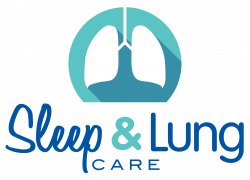Home Oxygen Therapy in Patients with Severe COPD: A Lifeline for Improved Quality of Life
Chronic obstructive pulmonary disease (COPD) is a progressive lung disease that makes breathing increasingly difficult over time. It is one of the leading causes of morbidity and mortality worldwide, characterized by symptoms such as chronic cough, wheezing, shortness of breath, and fatigue. As the disease advances, many patients with severe COPD may develop a condition known as hypoxemia, where the blood oxygen levels become dangerously low. For these patients, home oxygen therapy (HOT) can be a crucial part of their treatment plan, improving both survival rates and quality of life. This article explores the role of home oxygen therapy in managing severe COPD and how it benefits patients.
What is Home Oxygen Therapy?
Home oxygen therapy involves the use of supplemental oxygen delivered via nasal cannulas, face masks, or other devices to increase the amount of oxygen available to the lungs. It is typically prescribed for COPD patients whose blood oxygen levels fall below normal thresholds, especially when they experience significant shortness of breath during daily activities or at rest. The goal is to maintain adequate oxygen levels in the bloodstream to prevent complications such as heart failure, cognitive impairment, and further lung damage.
Oxygen therapy can be administered in various forms:
- Continuous oxygen therapy: Oxygen is delivered continuously over 24 hours to maintain constant blood oxygen levels.
- Intermittent oxygen therapy: This type of therapy provides oxygen only during specific activities, such as exercise or sleep, when oxygen levels tend to drop.
- Pulsed oxygen therapy: Oxygen is delivered in pulses or bursts, typically during inhalation, and is used to improve the efficiency of oxygen delivery.
Why is Home Oxygen Therapy Important for Severe COPD Patients?
For patients with severe COPD, home oxygen therapy serves as a critical intervention for managing the debilitating symptoms associated with the disease. When the lungs are unable to supply enough oxygen to the body, patients experience worsening shortness of breath, fatigue, and an inability to perform even simple tasks. By increasing the available oxygen, HOT helps to alleviate these symptoms and supports better respiratory function.
- Prevents Hypoxemia Complications: One of the primary reasons home oxygen therapy is prescribed is to prevent the serious complications of hypoxemia, which occurs when blood oxygen levels fall below the normal range. Hypoxemia can cause a range of problems, including pulmonary hypertension (high blood pressure in the lungs), heart failure, and cognitive decline. By maintaining adequate oxygen saturation levels, HOT can reduce the risk of these complications.
- Improves Exercise Tolerance and Mobility: Severe COPD can limit a patient’s ability to exercise or engage in daily physical activities due to the increased demand for oxygen. The use of home oxygen therapy during physical exertion can help improve exercise tolerance, allowing patients to remain active for longer periods. This is especially important as regular exercise can strengthen the respiratory muscles, enhance lung function, and reduce the overall impact of the disease.
- Enhances Sleep Quality: Many COPD patients suffer from sleep disturbances due to oxygen desaturation during sleep. Nocturnal oxygen therapy ensures that patients maintain optimal oxygen levels throughout the night, helping them achieve better rest and improve overall well-being. This is crucial for preventing the daytime fatigue that can be exacerbated by poor sleep quality.
- Improves Mental Health and Cognitive Function: Chronic low oxygen levels can have a profound impact on mental health, contributing to feelings of anxiety, depression, and confusion. Additionally, long-term hypoxemia can impair cognitive function, making it more difficult for patients to concentrate or remember things. By improving oxygen saturation, HOT can help mitigate these mental health challenges and improve cognitive function, providing patients with a greater sense of control over their daily lives.
Criteria for Home Oxygen Therapy in Severe COPD
Not all COPD patients require home oxygen therapy. The decision to initiate oxygen therapy is based on specific medical criteria, including:
- Oxygen Saturation Levels: If a patient’s oxygen saturation levels (measured using a pulse oximeter) fall below 88% at rest, during sleep, or with exertion, oxygen therapy is typically recommended.
- Arterial Blood Gas (ABG) Results: Blood tests may be performed to measure the levels of oxygen and carbon dioxide in the bloodstream. If a patient shows evidence of hypoxemia (low oxygen levels) or hypercapnia (high carbon dioxide levels), oxygen therapy may be prescribed.
- Symptoms of Hypoxia: In addition to low oxygen levels, patients who experience significant shortness of breath, fatigue, or confusion may be candidates for home oxygen therapy.
- Smoking Cessation for at Least 3 Months: It is also generally recommended that patients have quit smoking for at least three months before starting home oxygen therapy. Smoking is a major risk factor for the progression of COPD and continues to worsen lung function. Quitting smoking is crucial for slowing disease progression and improving the effectiveness of oxygen therapy.
Benefits of Home Oxygen Therapy
- Prolonged Survival: Studies have consistently shown that patients with severe COPD who use oxygen therapy for at least 15 hours per day experience longer survival rates. By maintaining optimal oxygen levels, the therapy reduces the strain on the heart and lungs, helping to prevent organ failure and other complications.
- Improved Quality of Life: Oxygen therapy significantly improves the day-to-day functioning of COPD patients. By ensuring that patients maintain adequate oxygen levels during both exertion and rest, HOT helps alleviate symptoms, allowing patients to engage in daily activities with greater ease. This leads to an overall improvement in quality of life, including better physical, mental, and emotional health.
- Reduced Hospital Admissions: Oxygen therapy has been shown to reduce hospital admissions due to exacerbations of COPD. By stabilizing blood oxygen levels, patients are less likely to experience acute respiratory distress, which can lead to hospitalization. This not only benefits the patient but also reduces the overall burden on the healthcare system.
Challenges and Considerations
While home oxygen therapy provides numerous benefits, there are some challenges that both patients and caregivers must consider:
- Cost and Access: Although home oxygen therapy is highly effective, it can be expensive, and not all patients may have access to affordable equipment. However, eligible patients can have the cost of the therapy funded through the State Wide Equipment Program (SWEP), which helps with access to medical devices and support for those with chronic conditions. Insurance coverage and healthcare policies vary by region, so it’s important for patients to check eligibility.
- Adherence: Successful home oxygen therapy requires consistent use, and some patients may struggle with adherence. It’s essential for patients to understand the importance of using oxygen therapy as prescribed to experience the full benefits.
- Mobility and Portability: Portable oxygen concentrators have made it easier for patients to move around while on oxygen therapy, but these devices may still be cumbersome for some individuals. Finding a portable solution that fits the patient’s lifestyle is an important consideration.
Conclusion
Home oxygen therapy is a vital treatment for patients with severe COPD, offering significant benefits in terms of survival, quality of life, and symptom management. By maintaining adequate oxygen levels, HOT reduces the risk of complications, enhances exercise tolerance, and improves sleep quality, among other benefits. While there are challenges related to cost, access, and adherence, the advantages far outweigh these obstacles for many patients. For those living with severe COPD, home oxygen therapy is truly a lifeline, enabling them to live fuller, more active lives.

